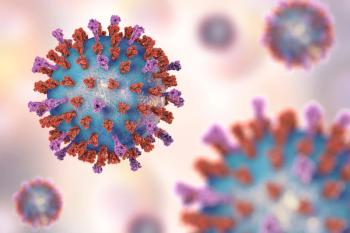
Summer Skincare: Sunburn and Allergic Contact Dermatitis
Patients may consult with their pharmacist regarding appropriate protection methods and treatment options available for common summer skin ailments.
As the pandemic slows down and people start to come out and enjoy some sunshine, it is important to remember the dangers summer weather can pose to the skin. One of those dangers is from the sun itself, as prolonged exposure to direct sunlight may lead to sunburn.
Another danger, allergic contact dermatitis (ACD), can be caught from plants that may be contacted during summer outdoor activities, such as hiking or gardening. Patients may consult with their pharmacist regarding appropriate protection methods and treatment options available for these common summer skin ailments.
Sunburn
Sunburn is characterized by the red, painful, and sometimes blistering skin that results from extended exposure to ultraviolet (UV) rays. Other symptoms include tenderness, swelling, palpable warmth, and, in more severe cases, headache, nausea, or fatigue.1
There are 2 forms of UV radiation: UV-A and UV-B. Of the 2, UV-B is more dangerous, because it damages DNA and can lead to cancer.2 Nonetheless, both UV-A and UV-B rays contribute to sunburn and should be avoided.3
The risk of developing sunburn is particularly high between 10 am and 4 pm, the time of day when the sun is most present, causing one’s skin to absorb a higher amount of harmful UV light. This risk is especially heightened in regions with increased elevation, by reason of lesser protection from the atmosphere, as well as regions closer to the equator.2,3 It is recommended to avoid being outdoors in these conditions for extended periods of time without proper protection.
One method of protection from the sun is to wear UV-blocking clothing and accessories. Tighter woven fabrics and darker colored clothing will provide better UV protection.1 Hats can shield one’s face and neck, while sunglasses can protect the eyes. It is ideal to have clothing cover up as much skin as possible.
To protect the areas not covered by proper clothing and accessories, especially on hot days when wearing longer sleeves is unrealistic, sunscreen should be used to prevent overexposure of UV rays. When sunscreens are applied to the skin, they will prevent sunburn by reflecting or absorbing the UV light.3
They can be made from organic or inorganic ingredients, both of which will equally protect against UV radiation. However, inorganic sunscreens may leave a visible film on the skin when applied. Organic sunscreens are less likely to leave anything visible, but they are more likely to cause some sort of allergic reaction.3
Sunscreen should be applied liberally over any exposed skin 15 to 30 minutes before sun exposure and should be reapplied every 2 hours or after getting wet.1 For proper protection, it is recommended to use sunscreen with an SPF of at least 15, although some organizations such as the American Academy of Dermatology recommend an SPF of 30 or more.3
If sunburn does occur, it is generally self-limiting and should start to improve on its own after a few days.1 Treatment methods may be used, but they will only help with the associated symptoms of the burn, not treat the burn itself.
Treatment methods include acetaminophen or nonsteroidal anti-inflammatory drugs (NSAIDs) for pain and topical corticosteroids, such as hydrocortisone, for pain and inflammation.3 Corticosteroids may come as creams or ointments.
Creams are generally for wetter skin conditions that may be weeping while ointments might be a better option for sunburn because they are thicker and are typically used for dry and flaky conditions, which sunburn exhibits.4 Additionally, drinking water and moisturizing will keep skin hydrated as the damaged skin peels off, and if itching occurs, oral antihistamines, such as diphenhydramine, can be used to reduce the itching.1
If sunburn is severe, it may require examination by a physician. Further care is warranted when sunburn covers a large part of the body, if blistering on the hands, face, or genitals is present, or signs of swelling or infection occur, as well as if the sunburn persists for a prolonged amount of time.1
An important factor to note is that some drugs might increase photosensitivity, meaning that when they are taken, sunburn may occur with a shortened exposure time. Examples of these drugs include NSAIDs, such as ibuprofen and naproxen, cardiovascular drugs, such as furosemide and amiodarone, and antibiotics, such as ciprofloxacin and sulfonamides.5 It is important to counsel patients taking these medications that extra precautions should be put in place to avoid UV exposure.
It is also important to know the risk of skin cancer that UV radiation poses. While sunburn can be painful and an inconvenience, cancer can be dangerous and life threatening. Any scenario that puts one at risk of sunburn also puts them at risk of developing skin cancer, which is why proper sun protection should be prioritized.2
ACD
Another ailment of the skin that may be encountered is ACD. As people spend more time outdoors during the summer months, they might encounter reaction-causing plants such as poison ivy, poison oak, and poison sumac.
When skin is exposed to these plants, a red rash may develop. Symptoms of exposure include various degrees of itching, presence of bumps and blistering, and occasionally weeping and crusting.6
This rash development is due to an allergic reaction to urushiol, an oil found in these plants.7 Simply brushing up against the plant might be enough to cause a reaction. Usually, the reaction will show 1 to 2 days after exposure but could present as early as a few hours after exposure.8
The reaction will typically follow a pattern called a crescendo reaction, meaning the rash will start small and get worse before it gets better. Although the reaction is self-limiting, it might take up to 3 weeks to fully clear.7
Preventative measures for ACD include wearing protective clothing, such as long pants, long-sleeved shirts, and gloves, as well as using a barrier cream, such as bentoquatam, which may slow or prevent oils from reaching the skin.6 When exposure is believed to have occurred, it is important to take steps to reduce the severity and spread of the rash to come.
This involves washing exposed skin thoroughly with soap and water and washing any clothes that may have gotten oil on them.6 This will reduce the amount of oil absorbed into the skin and prevent it from coming in contact with any other parts of the body. The sooner the skin is washed, the better; 50% of the oil can be removed after 10 minutes but only 10% after 30 minutes.8
Products may be applied to the skin to reduce itching and control the rash. Calamine lotion may be used to reduce mild itching and relieve dry weeping rashes.8 Topical corticosteroids may be recommended OTC or may be prescribed if the rash is more severe.
Oral corticosteroids may be prescribed if there is significant blistering or if the rash is widespread.7 It is important to note that antihistamines have very minimal effect on itching from urushiol because histamine does not play much of a role in the reaction to these plants.8
Like sunburn, if certain qualities or severity are met, it would be best to visit a physician. These qualities include rash discomfort that leads to loss of sleep or distraction from daily activities, covering a large portion of the body, being present on the face or genitals, or if the rash does not resolve within 3 weeks.6
Additionally, immediate care should be sought if the rash is showing signs of infection, such as fever or exuding pus, or if it is affecting the eyes, lungs, nasal passage, mouth, or digestive tract.6
While these threats to healthy skin exist, the implementation of proper preventative measures and treatment methods should bring in a safe and enjoyable summer.
References
- Sunburn: symptoms and causes. Mayo Clinic. Accessed June 17, 2021. www.mayoclinic.org/diseases-conditions/sunburn/symptoms-causes/syc-20355922
- Guerra KC, Urban K, Crane JS. In: StatPearls [Internet]. Sunburn. StatPearls Publishing; 2021. Accessed June 17, 2021. www.ncbi.nlm.nih.gov/books/NBK534837/
- Wanat KA, Norton SA. CDC Yellow Book, chapter 3: sun exposure. CDC website. Reviewed June 24, 2019. Accessed June 17, 2021. wwwnc.cdc.gov/travel/yellowbook/2020/noninfectious-health-risks/sun-exposure
- NHS. Hydrocortisone for skin. Reviewed December 10, 2020. Accessed June 22, 2021. www.nhs.uk/medicines/hydrocortisone-skin-cream/
- Lugović-Mihić L, Duvancic T, Fercek I, Vukovic P, Japundzic I, Cesic D. Drug-induced photosensitivity – a continuing diagnostic challenge. Acta Clin Croat. 2017;56(2):277-283. doi: 10.20471/acc.2017.56.02.11
- Contact dermatitis: symptoms and causes. Mayo Clinic. Accessed June 17, 2021. www.mayoclinic.org/diseases-conditions/contact-dermatitis/symptoms-causes/syc-20352742
- Ruenger TM. Contact dermatitis. Merck Manual Professional Edition. Reviewed February 2021. Accessed June 17, 2021. www.merckmanuals.com/professional/dermatologic-disorders/dermatitis/contact-dermatitis
- Kim Y, Flamm A, ElSohly MA, et al. Poison ivy, oak, and sumac dermatitis: what is known and what is new? Dermatitis. 2019;30(3):183-190. doi: 10.1097/DER.0000000000000472
Newsletter
Stay informed on drug updates, treatment guidelines, and pharmacy practice trends—subscribe to Pharmacy Times for weekly clinical insights.




